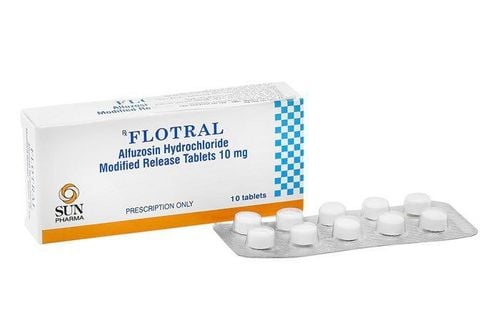This is an automatically translated article.
Hwaxim is an antibiotic used to treat bacterial infections. Antibiotics often affect the health of patients if used incorrectly. The following are some sharing that clarify how Hwaxim is used to treat bacterial infections.
1. Uses of Hwaxim
Hwaxim is used for certain cases of bacterial attack. It is not always possible to assign patients to treatment with Hwaxim. Therefore, patients should consult a doctor before taking the drug to ensure proper use and effective use.
Usually antibiotics with the same treatment group against viruses, fungi or bacteria that cause disease will be classified in the same group. However, the doctor will prescribe the use of each type differently based on its own characteristics. With antibiotic Hwaxim, you are usually prescribed in the following cases:
Treatment of drug-sensitive bacteria in the respiratory tract Treatment of urogenital tract infections Treatment of intra-abdominal infections Treatment of bacterial infections on tissue and epidermal cells Treatment or prevention of infection in obstetrics and gynecology Treatment of infections in patients diagnosed with meningitis Treatment of sepsis Prevention of patients at risk of infection after completion surgery Each individual case will have specific antibiotics. Therefore, check your health at the hospital so that your doctor can determine the type of bacteria and sensitivity to the drug before use.
2. Dosage and how to take Hwaxim
Hwaxim is prepared in powder form, so it needs to be diluted into a solution before use. This is an injectable drug that can be used intravenously or intramuscularly. At each designated injection site, the doctor will consider the appropriate effect and dose for the patient to maximize the effect of the drug.
Dosage of the drug is considered according to the group of patients based on age. In addition to age, the patient's infection status and other underlying medical conditions will also affect the dose of the drug when used for treatment. The following are some commonly used doses:
Children under 3 months of age do not have a prescribed dose of Hwaxim Children from 3 months of age need to use a weight-based dose. Daily dose will be considered in the range of 50-100 mg/kg. Children with severe infections will often receive doses above 100 mg/kg. The specific dose will be considered by the doctor to ensure the effect. Children with musculoskeletal infection syndrome increase the dose to 150 mg / kg in 1 day. Children treated for meningitis also receive doses in the range of 200-240 mg/kg per day. Adults usually use a dose of 750 mg and consecutive doses need to ensure not less than 8 hours. Patients with severe infections can take doses in the range of 750 - 1500 mg every 8 hours and proceed to intravenous injection. slow. The maximum adult dose per day should not exceed 3000 - 6000 mg. The indicated duration of treatment with antibiotic Hwaxim is 10 days. In patients with renal impairment, the actual dose should be adjusted on the basis of the measured Clcr clearance rate. ClCr less than 10 ml/min, the usual dose can be given intravenously or intramuscularly. However, instead of consecutive doses spaced 8 hours apart, they were extended to 24 hours. 10 < ClCr < 20 proceed with slow intravenous injection of 750 mg dose. The doses are adjusted at least 12 hours apart.
3. Notes before taking Hwaxim
Hwaxim medicine can cause irritation for patients leading to dangerous side effects. Before the injection, your doctor will ask you to provide information regarding your allergy history. As a result, it is possible to check the risk of drug reactions. At the same time, you should choose slow intravenous injection or electric injection to give the body enough time to adapt to the drug to prevent the risk of anaphylaxis or serious allergic reaction.
For patients with confirmed hypersensitivity to cephalosporins, the use of Hwaxim is contraindicated. If you are allergic to any of the ingredients in this medicine and have been affected, tell your doctor. In this case, the drug will be changed with the same effect to reduce side effects for the patient.
A history of penicillin allergy affects your ability to use any antibiotic. Although not completely contraindicated to use, please note this point to avoid dangerous interactions. Patients should be examined to exclude the risk of gastrointestinal disease or colitis. If you have had this problem in the past, please report it to your doctor to promptly provide a treatment plan.
Women who are suspected of being pregnant or are pregnant are not recommended to use Hwaxim. Because the drug Hwaxim is not indicated for children under 3 months of age, nursing mothers should carefully talk to their doctor to consider before taking Hwaxim medicine to avoid affecting the quality of milk and the health of the baby.
Hwaxim is an injection, so it should be taken by a qualified medical professional. Absolutely avoid self-medication without a prescription. For patients, when indicated, should carefully check the expiry date of the drug packaging before being injected to avoid the case that the package is affected by deformation or the drug has been subjected to an oxidation reaction to change the drug's properties.
4. Side effects of the drug Hwaxim
Antibiotics are mostly effective by eliminating large amounts of bacteria in the body. However, the effect of the drug depends on each patient's location, so it is difficult to accurately assess the risk for the patient. In order to prevent side effects, patients should be aware of the following named effects:
Nausea, Inflammatory bowel disease, Abdominal pain, Vaginal infections, Anemia Disorders leading to impaired liver and kidney function Mental disorders especially epilepsy Hemorrhagic These side effects can be easily detected but can also be silent. Moreover, the above are not all side effects of Hwaxim. To prevent the effects caused by side effects, each patient should actively check their health periodically and re-examine as prescribed by the doctor. Also, please note that the results are retained for easy comparison when necessary.
5. Interaction with Hwaxim
Interactions of Hwaxim drugs can be affected if used concurrently with diuretics or Aminoglycosides. Other interactions may occur because the patient has an underlying disease or is at risk of undetected disease.
First to avoid interaction Hwaxim should not be used at the same time 2 drugs combined. In case of needing parallel treatment, please discuss with your doctor, whether it is a treatment drug or a functional food to avoid causing dangerous interactions for health.
Hwaxim drug is used to treat inflammation in bones, joints, respiratory tract and even meningitis. Specific cases where the drug can be used will be guided by your doctor. Always pay attention to check your health at the hospital carefully before using the medicine to make sure the treatment is suitable for your condition.













